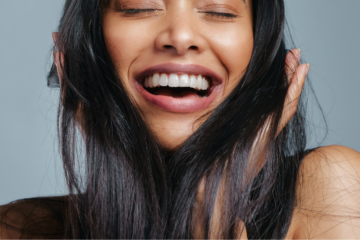Hair is a type of hair that covers and protects the head and scalp. In almost every civilization, hair is of particular importance. Often an element of seduction, whether short or long, it is also a symbol of strength and power.
Knowing your hair helps you take better care of it.
Hair composition
Hair is essentially composed of a protein (97%), keratin, responsible for its great strength. But it also contains water, fatty acids, melanin, zinc, vitamins and iron.
Hair is composed of a root and a shaft
The hair shaft is the visible part of the hair and is made up of three layers: the medulla, surrounded by the cortex, itself enveloped by the cuticle.
-
- The cuticle: highly protective, this layer of hair gives shine and softness thanks to the horny, scale-like plates that partially cover each other.
- The cortex: full of melanin, this part determines the hair's color as well as its main characteristics (strength, elasticity...).
- The medulla: this is the innermost part of the hair shaft. Made up of a number of proteins, it plays no particular role.
The hair root, located under the skull and therefore invisible, is buried in the hair follicle, where hair is produced. The root is stimulated by nearby blood vessels, enabling hair growth. Above this is the sebaceous gland, which secretes sebum to lubricate the hair. The shape of the follicle is a genetic characteristic that influences the distribution of the different keratin layers in the hair, as well as hair type.
Hair cycles
Hair is born, lives and dies during the hair cycle. Each hair has its own cycle, which lasts between 3 and 6 years.
The hair cycle has three stages:
- The anagen phase: this is the growth phase, which lasts between 3 and 6 years. 85% of hair is in the growth phase. The rate of growth is 0.9 to 1.3 cm per month.
- The catagen phase: this is the resting phase, lasting around 3 weeks and affecting 1% of hair. It corresponds to a resting phase for the follicle: cell division stops, the follicle shortens and diminishes in volume.
- The telogen phase: this is the phase of hair loss, lasting around 3 months and affecting 14% of all hairs. Then the cycle starts again, with new hair being produced by the follicle.
Hair loss is a natural phenomenon, and the average person loses between 45 and 60 hairs a day, or even a hundred at the change of season.
Hair color
Hair color is governed by the melanocytes that synthesize melanin. There are different colors of melanin - yellow, red, brown and black - which combine to produce hair color.
In the case of canitis (white hair), melanocytes no longer function. This disappearance is programmed by a biological clock specific to each of us. But oxidative reactions, responsible for cell aging, also play a role.
Good to know:
- Brunettes and redheads have less hair than blondes.
- Brown hair has around 100,000 hairs.
- Blonde hair has around 150,000 hairs.
- A person with red hair has an average of 90,000 hairs.
The main problems
-
- Split ends : the outer layer of the hair is highly exposed to external aggressions. As a result, the amount of keratin at the ends of the hair decreases.
-
- Greasy hair: a shiny appearance that reflects a malfunction of the sebaceous glands in the follicle. Sebum is produced in excess.
-
- Dry or brittle hair: it has aged too quickly and keratin has lost its elastic properties.
-
- Dandruff: clusters of dead cells that fall from the scalp. This is due to accelerated renewal of the scalp's epidermal cells.
Taking care of your hair
Medical treatments, hormonal imbalances, fatigue, unbalanced diet, sun or stress are all factors that can influence the health of our hair.
Eating a healthy, balanced diet prevents deficiencies and provides nutrients such as zinc, magnesium and calcium that are important for the beauty of our hair. Eating foods rich in vitamin B6 (salmon, bananas or potatoes) can prevent or help treat oily hair, for example.
Indeed, what we eat affects our hair, and nutritional deficiencies can have repercussions on hair health.
Christophe Nicolas Biot's advice
« Quand on a une alimentation bien équilibrée et une bonne hygiène de vie au quotidien, cela se répercute forcément sur le métabolisme et se voit sur la chevelure. »
Hair loss
The causes of hair loss can be both external and internal.
Around a third of Caucasian men develop baldness by the age of 30, half by the age of 50, and around 80% by the age of 70. However, the phenomenon can begin as early as the end of adolescence.
Fewer women suffer from baldness. By age 30, it affects 15-20% of women, and 30-40% at menopause.





